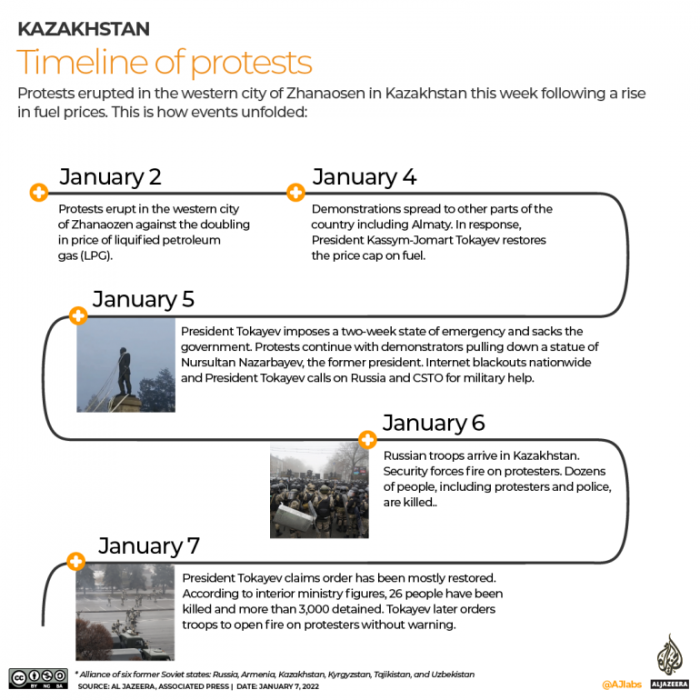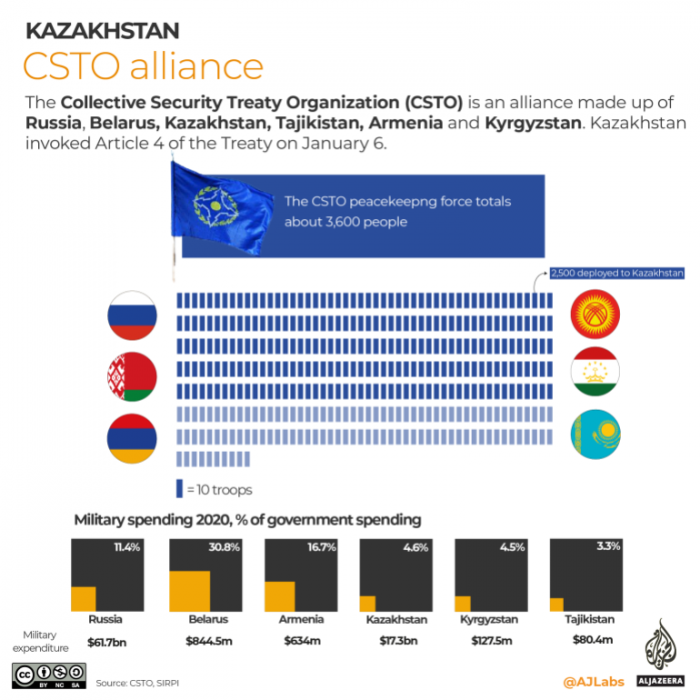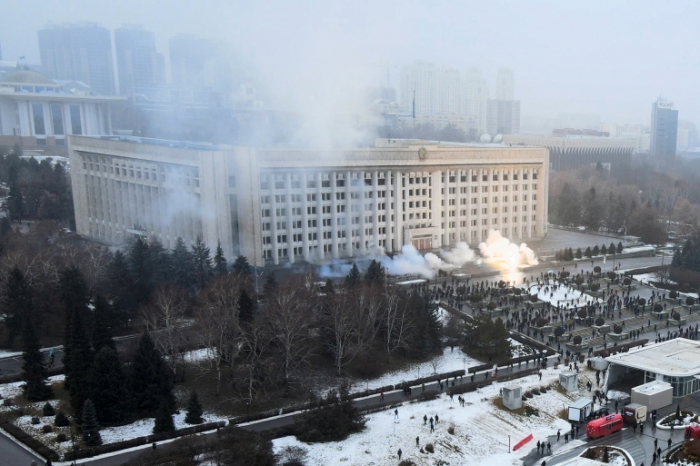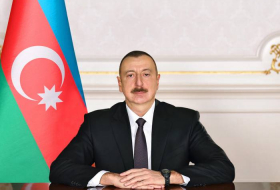Kazakhstan’s president, Kassym-Jomart Tokayev, has ordered security forces to “open fire with lethal force” against protesters who he describes as “terrorists”.
Demonstrations began at the weekend in the western town of Zhanaozen, instigated by rising fuel prices. Protests then spread rapidly across the country and encompassed a broader range of issues, such as corruption and inequality.
Dozens of protesters and security officers have been killed in clashes.

Timeline of protests

Fuel prices
The price of liquified petroleum gas (LPG) doubled in price on January 1 in Zhanaozen – one litre of LPG in the city was 50 tenge ($0.11) for most of 2021, but increased to 120 tenge ($0.28) earlier this week.
The reason behind the spike relates to reforms in the fuel market, which took effect on January 1, 2022. In a bid to end subsidised fuel for customers, the price cap was removed, allowing the market to dictate its price. This resulted in rising costs at a time of high demand.
Up to 90 percent of vehicles in oil-rich regions such as Mamgistau, where protests started, rely on butane and propane for refuelling.
The price cap of 50 tenge ($0.11) was reintroduced soon after the protests began.
What is the CSTO?

The Collective Security Treaty Organization (CSTO) is a Russian-led alliance of former Soviet states: Russia; Belarus; Tajikistan; Armenia; Kyrgyzstan and Kazakhstan.
On January 5, Tokayev invoked Article 4 of the CSTO Treaty, according to which if one member is subjected to aggression by an external force, it is considered an aggression against all member states. Members of the alliance provide the “aggressed” country with military assistance and defence. It is the first time CSTO troops have been deployed in the organisation’s history.
The CSTO Peacekeeping Force totals 3,600 people. The general secretary of the CSTO, Stanislav Zas, told RIA news agency that the peacekeeping force being sent to Kazakhstan would number 2,500, though numbers could vary.
According to the Central Asian Bureau for Analytical Reporting (CABAR) the collective security system of the CSTO numbers 26,600 as of 2020.
Russia’s contribution to the CSTO accounted for 50 percent of the organisation’s overall budget in 2015, with the other five states contributing 10 percent to the budget.
Aljazeera
More about: #Kazakhstan
















































